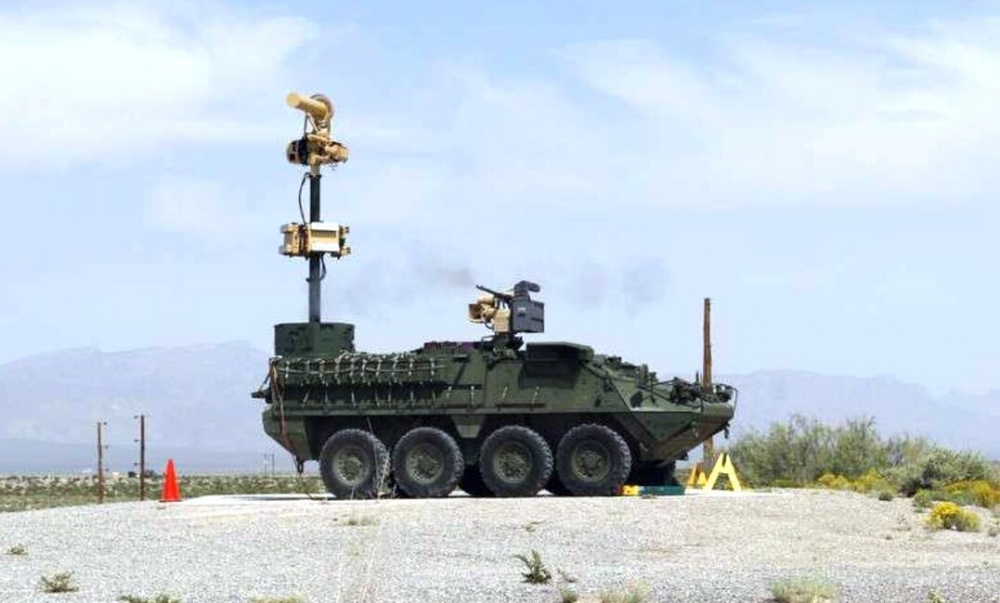When it comes to defending infrastructure, there is no one-size-fits-all approach. The combined drone-and-cruise missile attack on an Aramco refinery in Saudi Arabia that took place Sept. 14 revealed limitations of the particular defenses in place, and companies that make counterdrone systems leapt at the opportunity to promise an answer to at least some of the threat.
One such company is Liteye. The Denver, Colorado-based company has been in the sensor system business for decades, and traces its counterdrone offerings to an incident on the Korean Peninsula in 2014.
Radar built by Liteye and deployed along the DMZ to look for movement on the ground, like people and vehicles, instead detected flying objects. They were drones, flown by North Korea.
“That was the start of the counterdrone business for us,” said Kenneth Geyer, CEO of Liteye Systems. By 2015, Liteye had a prototype system to detect, identify, track and defeat drones, aimed at the military market. By October 2016, Liteye received a contract from the Air Force, demonstrated a system, and then had three systems deployed to Iraq.
Geyer says the systems saw action in the Battle of Mosul, the retaking of Raqqa, and alongside forces in Syria.
The Army’s Mosul Study Group published a report in September 2017, noting that soldiers adapted a stationary counterdrone system in a mobile platform, which both “[increased] the level of protection for their partner forces and combat advisors from ISIS unmanned aircraft systems” and “affected both friendly and adversary systems.”
“Counter-unmanned aircraft systems typically conflict with a majority of the organic systems in the electronic inventory of the U.S. Army and partner forces,” the report continued.
The challenges of countering drones while advancing on defensive positions held by opposing forces is certainly different than setting up point defense around critical infrastructure, though it is not wholly irrelevant. Jammers and other electronic warfare defeat capabilities are broadly prohibited from use in domestic contexts, and even some tracking systems may run afoul of privacy concerns under state and federal regulations.
In areas where the military is more likely to encounter armed, hostile drones, drone detection and mitigation systems can fit into a larger picture of aerial defense. Geyer points to Liteye systems used in conjunction with 30mm cannon from Orbital ATK and Raytheon’s PHASER microwave weapon system as ways sensors could pair to other tools capable of knocking a drone out of the sky.
“Bigger radar systems out there, they don’t detect close-in; we fill that gap,” says Geyer. “Our detection, track, identify piece fills the gap from 0 km out to 3.5km today; the next iteration gets us out 0-5 km.”
This is focused largely on Group 1 and 2 drones, those ranging from hobbyist quadcopters to smaller military scouts, about the size of a ScanEagle. The larger the drone, the further away it can be detected.
As for actual eagles, the system could sometimes pick up big raptors, but that’s being addressed.
“Some of our new radar software that we’ve been introducing for the Air Force’s use, we distinguish between birds and something that’s being flown,” said Geyer, pointing to the difference between how, say, props show up on radar compared to feathered wings. “Our operators do not spend time looking at birds.”
As for the roughly ScanEagle-sized drones used in the attack on the Abqaiq refinery, close-in detection, combined with an electronic warfare capability that can reach beyond the range of Liteyes sensors, might be a partial solution.
“If there’s something coming in — the Saudi drone attack is a perfect example — we could’ve stood that off at a lot greater distance than 3 km,” said Geyer. “Drones would have been the easier portion of that to defeat. I think there’s a lot of what that attack was that we could have prevented.”
Geyer clarifies that this is only an answer to the drone part of the Abqaiq attack, not the cruise missile part. Remotely piloted drones, or those relying on GPS or GNS signals to navigate, struggle without those signals. Cruise missiles and loitering munitions, meanwhile, can use other guidance tools, which makes defense against those threats trickier.
“We’ve never had an opportunity to try on cruise missiles, so hard to know if we would have had an effect or not had an effect, said Geyer. “If you look at what happened at Saudi, there needs to be a layered approach. So if you had our system in there, with different layers, you would have electronic warfare capability with possibility of working; you could have had 30mm cannon, a gun that could have been put on target, may have affected different parts of the target, cruise missile. There is no silver bullet for one technology to be able to do all things.”
One way attackers could adapt to counterdrone defenses is changing control systems for the uncrewed vehicles. Machine vision navigation, in particular, is much harder to disrupt than direct control by radio frequency.
Another way to get around counterdrone defenses would be to increase the number of drones and the angles of approach.
“If they’re going to stack drones in a nice cluster that makes them easy to detect it’s one thing; when they start spreading them out over space, that’s where it becomes a bigger challenge,” said Geyer. “Nineteen drones coming in from different trajectories is a whole different case than 19 drones coming in a nice big ball.”
Photo: Liteye
Source: C4ISRNet

